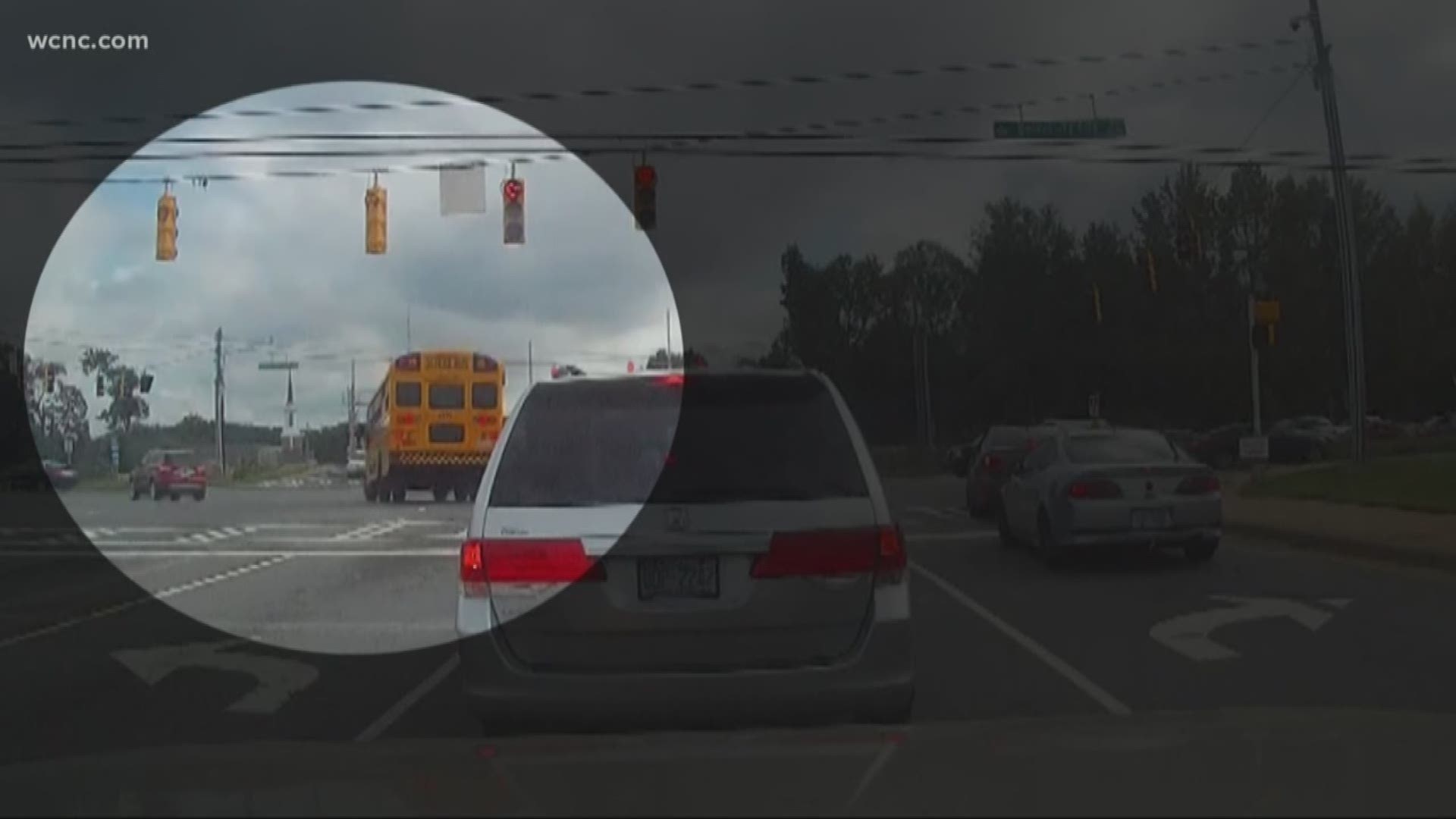CHARLOTTE, N.C. — Every day, more than 127,000 Charlotte-Mecklenburg Schools (CMS) students board a school bus.
Their parents entrust the driver will follow the basic rules of the road: Green means go, red means stop.
But time and time again, school buses are caught running red lights, including a CMS bus captured Tuesday running a red light by a dashcam on Robert and Joann Waite’s car near UNC Charlotte.
"Look at that school bus running a red light,” you can hear them saying in the background of the video. "Oh my God."
But a closer look at the video reveals the signal was yellow for just three seconds.
“In actuality, he doesn’t do anything more than the rest of us do. We’re not clairvoyant to know how long the light is going to last,” said Brian Ceccarelli, a licensed N.C. engineer with a degree in physics.
Ceccarelli told NBC Charlotte he’s recognized by the Institute of Transportation Engineers as an expert in traffic signals. He said short yellow signals put drivers in what’s called a dilemma zone, where drivers neither have the distance to stop nor the time to proceed through the intersection before the light turns red.
“It takes about five point five seconds for a school bus to do that, but the yellow is only three seconds,” he said.
Charlotte Transportation Department (CDOT) maintains the traffic signal at the intersection of University City Boulevard and Pavilion Boulevard where the incident happened.
“Our yellow and red clearances are calculated using NCDOT Vehicle Clearance Interval Timing Calculations. The yellow time calculation is based off the speed limit, perception time, deceleration rate, and grade of the road,” said CDOT spokesperson Amy Mitchell.
But according to Ceccarelli, the formula, which was written in 1960 and somehow made its way into a transportation engineering handbook, only applies to traffic going straight through an intersection, not turning. He said the calculations also only use averages by standard passenger vehicles and do not factor busses or commercial vehicles.
“This equation makes people run red lights and in severe cases, like school bus drivers turning left, is where this formula falls apart the most,” he said.
Ceccarelli is now part of a group pushing the North Carolina Department of Transportation (NCDOT) to update its formula, recommending officials remove the two in the denominator of the equation.
“Any high school student can look at this equation and go, wait, this is wrong. There is a two in the denominator in this equation, which means that the yellow light time, at most, is one-half the time it takes you to stop your car,” said Ceccarelli.
He quickly added, “Traffic engineers will not use this right equation because, one, they’ve been using this other equation for 50 years, and they don’t want to confess that they’ve been using the wrong one. Because if they confess, they admit they’ve killed like dozens of people during their lifetime in their career.”
The formula used by NCDOT and CDOT is not a state or federal requirement. Federal guidelines specify only that yellow light intervals must fall between three and six seconds.


